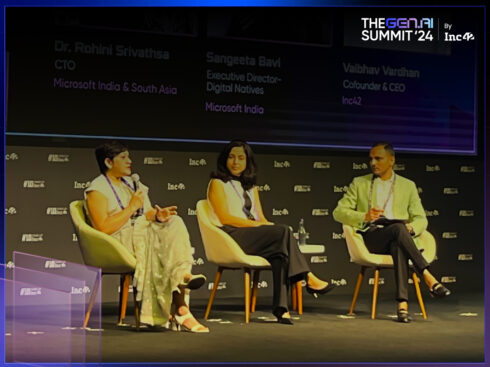
SUMMARY
One of the side effects of the Covid-19 crisis is that it provides an opportunity for organisations to test their capabilities in implementing WFH
In remote working, accountability is highly recommended to maintain the enthusiasm of the workforce and improve the quality and quantity of their work
360-degree feedback allows peers, managers, cross-functional managers, direct reports, customers, and other external and internal stakeholders on an employee’s performance and competency
Covid-19 has brought many industries to a standstill position but the IT sector is still functioning. IT sector can function because it is largely dependent on technology, which facilitates remote working. The magic to make remote working successful and ensure business continuity lies in how you leverage technology and people. One of the side effects of the Covid-19 crisis is that it provides an opportunity for organizations to test their capabilities in implementing WFH.
People-centric organizations would have already had work from home policies in place, and so they are confronting lesser consequences in extending those policies to the entire workforce for an unexpected one month. The companies with rigid work policies are stumbling and waiting for the lockdown period to get over. Once, the period gets over, they get back to normal work patterns. They may exhale a sigh of relief after the lockdown period, but what about the future of work? Do you think those organizations are future-proof?
The workforce and global companies are moving toward remote working to cut down travel costs, operating expenses, office space rent, etc. In the fast-pacing world, it is almost impossible to get through sticking to obsolete work models.
Here are a few tips on how to measure progress throughout Covid-19. Grab this opportunity to test the water and your capability before committing yourself.
OKR Measures Your Progress Toward Your Goals
“70% of employees want more clarity on goals & strategy.” – Perdoo
OKR (Objectives and Key Results) is a strategy adopted by global companies like Google and Twitter to give more clarity to employees on the organization’s strategy. What is so special about OKR? Google implemented the strategy in its company to make the employees, focus, engage, and align their goals with company goals. When you dream of a big future (objective) for your company, small steps (key results) toward the goal make you realize the dream. That is the basic principle of OKR.
How to use OKR to measure progress in this pandemic situation? Every organization will have an objective to achieve in this crisis period. Determine the key results that are needed to reach your objective. There are two rules in setting the key results for your employees: they are,
- The key result should take you a step forward toward your destination.
- The key results should be numerically defined to quantitatively measure progress.
Giving Higher Accountability Creates Mutual Trust
A study asserts that managers who empower their employees are seen by their team members as effective and trustworthy. Autonomy fuels innovation and creates mutual trust between managers and employees. A result-oriented approach and trusting your team make employees more committed to their work and increase employees’ performance.
In remote working, accountability is highly recommended to maintain the enthusiasm of the workforce and improve the quality and quantity of their work. Besides, show employees how to prioritize their daily and weekly tasks for on-time completion of projects and affairs of greater importance.
Regular Check-ins Leads the Company Toward Growth and Development
“We all need people who will give us feedback. That’s how we improve.” – Bill Gates
Continuous check-ins pave the way for employees’ continuous development. The managers can track the progress of employees and guide them in eliminating the variables that impact their work through regular check-ins. But managers should be delivering constructive feedback to get the best out of the employees.
Employees, who are already anxious because of the chaotic situation, should not be pressured more by the managers. So, superiors should not reprimand or list only the negatives when they comment on the team members’ performance. A study reveals that 92% of respondents who are surveyed agreed with the assertion, “Negative feedback, if delivered appropriately, is effective at improving performance.”
Continuous feedback is important to measure progress, but it is a double-edged sword that should be handled with prudence.
Performance Management to Enable Remote Work
Encourage 360-degree Feedback To Know The Direction of Your Team’s Journey
360-degree feedback allows peers, managers, cross-functional managers, direct reports, customers, and other external and internal stakeholders on an employee’s performance and competency. It is more needed now than ever to evaluate and analyze an employee’s engagement level and contribution to the overall business objectives. When every individual is headed in the right direction, the company can easily achieve the desired results. Leverage technology to use the technique to its fullest potential.
Employee Engagement And Progress Are Intertwined
Gallup study reports that 70% of employees are disengaged at work, and only 13% of employees agree that they are engaged at work. Even in a normal situation, the engagement level of employees is too low. How engaged will your employees be in this panic-stricken situation? Engaging your workforce and offering help to relieve their stress should be in your priorities list. Recognize your employee’s efforts, conduct online therapy sessions, arrange video conferences for them to feel valued, deliver a pep talk to enthuse your employees, and listen to their concerns and address them. Engaged and satisfied employees improve the overall performance of the organization.


























